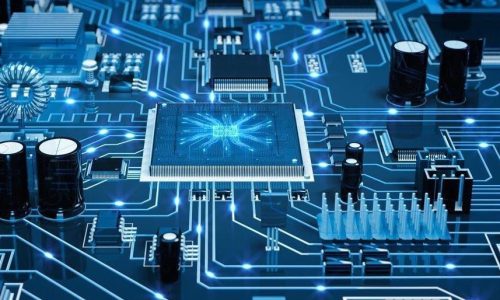- +92-51-4864925-26
- info@sina.edu.pk
- 693, Rehman Baba Road, Sector I-8/4, Islamabad.
Introduction
Robotics Course is offered at SINA Institute of Network & Aesthetics. Robotics is a branch of mechanical, electrical engineering, and computer science that deals with the designing, construction, operation, and application of robots and computer systems for their control, sensory feedback, and information processing. These technologies deal with automated machines that can take the place of humans in dangerous environments or manufacturing processes, resemble humans in appearance, behavior or cognition. After completing Robotics Course, the delegates receive a lifetime of post-training support from SINA Institute, to help them apply the technologies and skills they have learned with us for their future roles in their coming fields in Automation and embedded System Design.
Labs
- The complete course has practical there is no theory in this course.
Robotics is a rapidly growing field of today, as the technological advances continue; researching, designing, and building new robots serve various practical purposes, whether domestically, commercial or military. Many robots are built to do jobs that are hazardous to people such as defusing bombs, finding survivors in unstable ruins, and exploring mines and shipwrecks. This Roboticsm Course focuses on the key elements, concepts, and terminologies associated with Robotics lifecycle management. Register yourself to this course and become a Professional. The robotics course introduces the student to:
- Utility power supply system in Pakistan
- Power generation and distribution
- Alternate power sources
- Analog electronics
- Sensors and actuators
- Digital electronics
- Power electronics
- Software Programming & Simulation
- Development of line tracking ROBOT
At SINA, the Robotics Course will let you learn more than stock phrases. We focus on the important elements of the course and highlight its principal purpose according to the demand of the society. It enhances learning abilities among individuals. People doing this course tend to build a strong grip and knowledge regarding the field. SINA’s certification will help you to become a professional so that you can achieve success in the coming field and help you grow around the globe. Robotics Course offered at SINA makes it possible for the learners to avail opportunities to go abroad for further study and job purposes. At SINA, we offer you an opportunity to leave behind all your deficiencies and move your life to another level. The course fee includes all the study materials, exam fees, Text Book, and CDs. Register yourself to this course and become a Professional.
Curriculum
- 9 Sections
- 77 Lessons
- 10 Weeks
Expand all sectionsCollapse all sections
- Module 01: Introduction to utility power supply system in Pakistan3
- Module 02: Power generation and distribution2
- Module 03: Alternate power sources5
- Module 04: Analog electronics10
- 5.1OPAMP based designing
- 5.2Introduction to operational amplifiers
- 5.3OPAMP as inverting and non-inverting amplifier
- 5.4OPAMP as a comparator, Hysteresis calculation
- 5.5Instrumentation amplifier
- 5.6OPAMP as V/I and I/V converters
- 5.7Shunt amplifier
- 5.8Difference amplifier
- 5.9OPAMP as a wave generato
- 5.10ADC and DAC designs
- Module 05: Sensors and actuators19
- 6.1Type of sensors used in industrial automation
- 6.2Light sensors (LDR, Phototransistor, IR sensor, UV sensor)
- 6.3Speed sensors (Tachogenerator, Opto-couplers, Proximity sensors, Encoders)
- 6.4Temperature sensors (PT-100, Thermocouple, Thermistor, Leaser)Robotics
- 6.5Distance sensors (Ultra-Sonic distance sensors, Leaser based distance sensors)
- 6.6Type of actuators used in industrial automation
- 6.7Motors (single-phase AC, Three-phase AC, DC, Stepper and BLDC)
- 6.8Linear actuators
- 6.9Magnetic latches
- 6.10Conversion of different parameters in electrical quantity i.e. V, I
- 6.11Conversion of light to voltage and current
- 6.12Conversion of temperature to voltage and current
- 6.13Voltage to frequency and frequency to voltage conversion
- 6.14The Voltage to current and current to voltage conversion
- 6.15Analog to digital and digital to analog conversion
- 6.16Voltage to PWM and PWM to voltage conversion
- 6.17Difference amplifier
- 6.18OPAMP as a wave generator
- 6.19ADC and DAC designs
- Module 07: Power electronics12
- 7.1Power handling devices
- 7.2Transistor parameters
- 7.3Transistor working modes
- 7.4The Transistor as an amplifier
- 7.5Transistor as a current amplifier
- 7.6MOSFETs and IGBTs parameters
- 7.7Use of MOSFET and IGBT
- 7.8Thyristor family (SCR and Tricks)
- 7.9Firing angle control using Triac and SCR
- 7.10DC motor drive using SCR
- 7.11Stepper motor driver using MOSFETs
- 7.12BLDC motor driver using MOSFETs
- Module 06: Digital electronics15
- 8.1Discrete electronic design
- 8.2Basic gating logic
- 8.3Combinational circuits
- 8.4Boolean algebra
- 8.5Karnaugh maps and timing diagrams
- 8.6Concept of Flip-Flop
- 8.7RS latch, D-Flip-Flop
- 8.8Eight-bit latch
- 8.9Addressable Latch
- 8.10Random-access memory
- 8.11Read-only memory
- 8.12Counters and timers
- 8.1389C51 as microcontroller
- 8.14Address Bus and Data Bus
- 8.1589C51 as microprocessor
- Module 08: Software Programming & Simulation3
- Module 09: Development of line tracking ROBOT8
- 10.1Mechanical and Electrical design
- 10.2Mechanical design using 3D max software
- 10.3Selection of sensors and circuits
- 10.4Selection of actuators and circuits
- 10.5Designing of a control system using a microcontroller board
- 10.6Assembling of line tracking ROBOT
- 10.7Bench testing of line tracking robot
- 10.8Final field testing of line tracking ROBOT
Instructor
Requirements
- Electrical and electronics engineers are eligible for this training. Or an academic degree with a major in electrical/ electronic engineering.
Features
- After complete this training the students will be able:
- To develop teamwork and co-operative skills.
- To get an opportunity to construct knowledge and build theories, thus, strengthen their understanding of the Robotics field.
- Not only enhances their logical perception but also improves analytical and reasoning ability.
- It is just incredible to see how students are getting benefited from advanced robotics courses in SINA. Today, robotics is a rapidly growing field, as technological advances continue; researching, designing, and building new robots serve various practical purposes, whether domestically, commercially, or militarily. Throughout history, it has been frequently assumed that robots will one day be able to mimic human behavior and manage tasks in a human-like fashion. Many robots are built to do jobs that are hazardous to people such as defusing bombs, finding survivors in unstable ruins, and exploring mines and shipwrecks.






